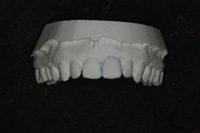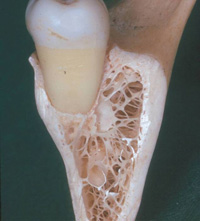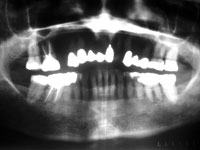There is no question that improved endodontic skills can greatly reduce the stress of performing root canal treatments for your patients. But did you know that improving your endodontic skills can increase your bottom line by up to $184 to $242 per hour for endodontic procedures? It’s all about efficiency, coupled with bringing your fees up to date.
After compiling before and after information from dentists attending courses on the new endodontic techniques, I’ve come to appreciate the tremendous benefit and positive impact that efficient and predictable endodontic procedures can have on a practice. In fact, I’ve studied this trend and named it “Endonomics,” and I spend a lot of time analyzing “endonomic” trends as reported by the doctors attending our seminars.
ENDODONTICS IS MORE PROFITABLE THAN MOST CROWN AND BRIDGE
Although most dentists understand how improving the efficiency of their endodontic procedures can improve their profits, few fully appreciate the great potential that lies therein. For example, most dentists consider crown and bridge their “bread and butter.” According to Gordon Christensen, about 80% of the crowns being done are single units. The average charge for a single crown closely approximates that for a molar root canal, yet typical supply costs are 21% of the fee for a crown and only 10% of the root canal fee. And, a root canal is generally accomplished in 1 visit instead of the 2 required for a crown prep, even though the total amount of time required is comparable (see Chart 1).

Charles Blair of the Blair, McGill and Hill Group states, “I am convinced that there is no greater potential for increasing your net hourly revenue than by doing your own uncomplicated endodontic procedures efficiently. My analysis has consistently shown endodontics to have the highest dollarperhour and highest dollarpervisit payoff of any procedure we do.” In the May 2002 issue of his popular newsletter, The Blair/McGill Advisory, Dr. Blair provides financial statistics for general dental and specialty dental practices. These numbers were tabulated from about 400 of his clients across the country. He found that endodontists had the greatest profitability of all the dentists surveyed. It doesn’t take an actuary to surmise from this information that increasing the amount of endodontics a GP does should have a very positive effect on net profit.
Let’s look at this potential by evaluating the typical endodontic fees and hourly production from endodontics.
MOST DENTISTS VASTLY UNDERCHARGE FOR ENDODONTIC TREATMENT
First, let’s look at the typical GP’s overall production. According to Dr. Blair, the typical GP is grossing around $435,000, with $100,000 or so coming from hygiene production. Thus, a GP working 203 days per year grosses $1,650 per day or $206 per hour on average. By comparison, let’s look at what Root Campers who have attended our seminars an 8month period averaged from endodontics (see Chart 2). Note that the more complex the procedure gets, the lower the hourly production. You would think it would be the other way around, but due to the inefficient way most dentists practice endodontics, they lose efficiency when treating multirooted teeth.


Another interesting fee comparison is my survey of the endodontists in my neck of the woods—the south side of Atlanta. Endodontists charge considerably more for the same procedure done in a GP’s office. Keep in mind that fees on the south side of the city tend to be lower than in the “big city” itself (see Chart 3).
PEOPLE ARE MORE MOTIVATED TO TREAT ANTERIOR TEETH
On average, the Atlanta south side endodontists’ fees were 45.2% higher than our Root Camp attendees’ fees, and that’s not even considering the retreatment category. The greatest fee differential was the anterior fee: The $680 average endodontist fee is 53.8% greater than the $442 average fee for general dentists attending our seminars.
The endodontists understand that the typical dental patient is much more motivated to treat an anterior tooth endodontically than a noncosmeticallycritical tooth. Besides, have you ever noticed that whenever your patients hear the word “root canal,” they think of 2 things: pain and the molar root canal fee. Regardless of the tooth involved, their perception is that it will cost the same as Aunt Betty’s molar root canal. You may not feel comfortable raising your anterior root canal fee by 53.8% all at once, but you may want to consider an immediate 10% to 25% fee increase.
WHAT IT TAKES TO INCREASE PRODUCTION BY $100 PER HOUR
A fascinating exercise that I do with every seminar group is to calculate how much more efficient they need to be performing molar root canals to increase their hourly production by $100. Keep in mind that this increase in hourly production directly impacts profitability, as there is no increase in overhead. The results consistently demonstrate that an increase in efficiency of only 21% to 22% accomplishes this goal. That’s an improvement of about 22 to 23 minutes in a procedure now averaging 1 hour and 46 minutes.
WHAT IS THE IMPACT ON YOUR PRACTICE OF PERFORMING EFFICIENT ENDODONTICS?
The most fascinating and exciting statistics I’ve discovered involve the results from our surveys taken at least 2 months following a dentist’s participation at an endodontic technique seminar. On average, doctors are reporting an endodontic fee increase of 10%. What’s more interesting is the improvement in efficiency that we consistently see. Chart 4 compares the average treatment times before and after the training.
As a bonus, the reporting dentists must be experiencing far less stress than before in their endodontic treatment, because they reported a perception that they improved their endodontic efficiency by an average of 51%. In actuality, my numbers indicate an improvement of about 27%. The dentists also reported that on average, their monthly gross income from endodontics increased by $2,000.
Based on a 10% fee increase and the time improvements noted above, I’ve charted the average improvement in hourly production after learning new techniques (see Chart 5).
THERE IS AN ENDODONTICS “GOLDMINE” IN YOUR PRACTICE
As you can see, when you improve your skills, with or without an increase in your fees, the improvement in hourly production is incredible. Once trained, the doctors in our survey performed root canals at an hourly rate that is 267% greater than the average GP’s hourly production. That’s the difference between $206 per hour and $551 per hour. When coupled with decreasing the stress related with treatment, I cannot think of a more efficient way to boost the net profits in a practice.
Dr. Goldstein is a general dentist and the vice president of CE Magic! Together with his partner, Dr. Kit Weathers, he produces the 2day, handson Practical Endodontics Root Camps, held in Griffin, Ga, and the Las Vegas Institute. Besides lecturing on the subjects of “Endonomics” and the “Goldstein Standard for Productive Endo Scheduling,” he is the author of Practice Building Nuggets from the Griffin Goldmine. For more information about the Practical Endodontics Root Camp or to reach Dr. Goldstein, call (877) 478-9748.










